In Germany, May is known for the large number of flowering perennials that awaken from their hibernation and present a wide variety of flowers. One of the classic plants that point to May is of course the poisonous lily of the valley, which is often confused with the wild garlic, which also blooms in this month. In addition to other typical May-flowers, the number of species that survive the penumbra and also want to present their splendor is increasing. Lung herbs are a good example of this. Regardless of which location you are looking for a blooming beauty, you shouldn't have a problem with it after the ice saints.
Of course, trees cannot fail to show off their blossoms too. This is also the case with the roses, which finally show up again from the end of May and, depending on the species, draw attention to themselves with picturesque calyxes or an intense scent. Color tones in May are predominantly white or pink and more and more intensely fragrant flowers are being formed. Above all, the increased amount of light that is available has a beneficial effect on flower formation. An extensive list now follows.

Queen Anthurium, Anthurium warocqueanum: Care A-Z
The Queen Anthurium is a variety from the anthurium genus, which comprises over 1,000 species and is also known in this country as the flamingo flower. Due to its original home in the tropical rainforests of South and Central America, it is mainly cultivated here as a houseplant.

Heart leaf flower, Anthurium clarinervium: Care A-Z
With its heart-shaped, whitish-green veined leaves and slightly wavy at the edges, the heart leaf flower immediately catches the eye. They are the greatest ornament of this attractive ornamental foliage plant.

Barberry hedge: planting and care from A-Z
Despite its thorns, the barberry is very suitable for a hedge due to its low demands on care and location. Because it grows very densely, the barberry hedge can withstand prying eyes from the outside.

Bearded Iris, Iris barbata: care from A-Z
There are high (Iris Barbata-Elatior) and low (Iris barbata-nana) varieties of the decorative beard iris (Iris barbata). However, the relatively simple maintenance looks similar for the different types of bearded iris. Instructions are given in the following article.

Persian imperial crown, Fritillaria persica: care
Unfortunately, the demanding Persian Imperial Crown also needs a lot of care. However, it offers a visual highlight in every garden with its beautiful blossom. If you follow our instructions for care, nothing stands in the way of abundant flowering.
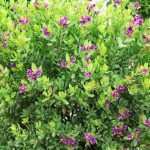
Finial, Polygala myrtifolia - care from A-Z + overwintering
The myrtle or myrtle-leaved finial, also known as finial for short, is a permanent bloomer from spring to autumn. It is considered to be easy to care for, but is extremely sensitive to too much moisture.

Dwarf palm, Chamaerops humilis: care from A-Z
Exotic palms are high on the popularity list. Often, dwarf palms of the Chamaerops humilis variety can be seen in gardens and on terraces. The attractive little palm tree requires little maintenance.

Hemlock, hemlock, Tsuga canadensis: care ABC
The Canadian hemlock (Tsuga canadensis) is one of the most graceful conifers. It impresses with its elegant shape with overhanging branches and fine needles. With proper care, it can get very old.

Trout begonia, Begonia maculata: care from A-Z
The trout begonia is a rare exotic beauty with striking foliage. The silvery-white dots on the green leaves also earned it the name Polka-Dot Begonia. Not to forget the extraordinary inflorescences.

Tuberous begonia, Begonia boliviensis: care instructions
Tuberous begonias are colorful, permanent bloomers that are preferred to be cultivated on balconies and patios. The eye-catching ornamental shrubs can also be planted outdoors. However, you have some requirements regarding care.

Indoor begonias, Begonia elatior hybrids: care
The indoor begonia can be a wonderful addition to the interior, but it also has some maintenance requirements. You can find out what to look out for here.

Coral begonia, Begonia corallina: care from A-Z
The coral begonia impresses with its large, striking leaves and intense coral-red flowers and rapid growth. We explain everything you need to know about caring for the popular Begonia corallina.

Tree magnolia, Magnolia kobus: care from A-Z
Like its relatives, the tree magnolia impresses with its impressive flowers in spring. However, it takes patience for the tree magnolia to show its full bloom. The tree magnolia is easy to care for if it has been given the right location. Because in terms of location, the Kobushi magnolia is a real diva. The tree magnolia tolerates the German winter well; frost protection is only required for young plants. It also doesn't need any special care in winter.

Weymouth pine, Pinus strobus: care from A-Z
The Weymouth pine originally comes from the temperate regions of America and also thrives very well in Central Europe. Anyone who opts for this tree, which is also called strobe, based on the botanical name, should choose a good location from the start, because it is a life decision. The white pine can live for several hundred years and reach considerable heights. Due to its robustness, this type of pine is on the advance in Europe.

Himalayan birch, Betula utilis: care from A-Z
The most beautiful ornament of a Himalayan birch is the gleaming white trunk bark. Distinctive kitten blossoms greet the viewer in spring when the picturesque tree puts on its lush green foliage. In autumn, the majestic wood with its golden yellow foliage says goodbye to the well-deserved winter break. Betula utilis combines these impressive attributes with a good-natured unpretentiousness and is recommended as the ideal house tree for the representative garden. Read all the information about professional care from A-Z in this green guide.

Blue bobblehead, Isotoma fluviatilis: care from A-Z
Blue bobble head is available in stores under many names. It is also known by many hobby gardeners as isotoma and false or carpet lobes. The blue bobblehead is originally native to Tasmania and the Australian southeast coast and prefers acidic and humid locations here. Due to the similar prevailing conditions in the local latitudes, the plant can also be cultivated in the garden. How the ideal care of the decorative ground cover should look like is explained in the further instructions.
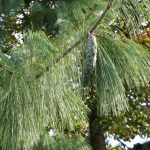
Lacrimal pine, Pinus wallichiana: care from A-Z
The teardrop pine is considered to be one of the most beautiful ornamental trees. The conifer owes this reputation to its long needles with a bluish-gray color and its imposing cones. Although the teardrop pine is not native to us, it thrives splendidly in many regions. In public green spaces you will find specimens over 20 meters high and up to 12 meters wide. But don't worry, there are also smaller varieties for the garden and terrace.

Akeleiblättrige meadow rue, Thalictrum aquilegiifolium: care
The flowers of the columbine-leaved meadow rue appear light and almost graceful. Except for the similarity of the leaves, this plant has nothing in common with the Columbine. Also called Amstelraute, it is actually a perennial wild plant, which has now also made it into domestic gardens as an ornamental plant. There it is a popular perennial in the bed thanks to its delicate flowers, which are also suitable for less sunny areas and an important fodder plant for insects. It is easy to care for and once planted it will delight its owner for years with its delicate flowers. In addition, it is not only of great visual value, but is also an important fodder plant for insects such as the owl butterfly. The meadow rue, on the other hand, is becoming less and less common in nature. In some regions of the low mountain range, where its natural distribution areas are, it is already so rare that it is considered a plant in need of care.

Forest forget-me-not, Myosotis sylvatica: care from A-Z
The forest forget-me-not conjures up sky-blue flower carpets in the garden from late spring. In the pot or balcony box, the many small flowers are also a real eye-catcher. The name "forget-me-not", around which there are many myths, goes back to the 15th Century back. It is unclear whether the flowers were given by the man to the woman as a token of love and loyalty, or whether the woman was supposed to remind her of her lover.

Schnurbbaum 'Little Baby' houseplant, Sophora prostrata | care
The Sophora prostrata, better known as the pagoda tree, has an unusual, interesting appearance. The "Little Baby" variety is particularly popular because of its lush and colorful flowers. Strongly twisting branches give the shrub a bizarre look. As a solitary plant, it can be planted in the garden or in pots on terraces and balconies. In order to enjoy outdoor and indoor plants for a long time, optimal care is essential.
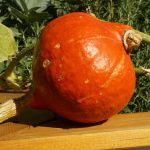
Growing Hokkaido Pumpkin: Care from A - Z | Cultivation & harvest
Autumn time is pumpkin time. One of the most popular pumpkins is the Hokkaido. The orange-red pumpkin with the bright pulp is so popular because you don't have to peel it to prepare it. Since the climate in its Japanese homeland is similar to ours in Central Europe, the vegetable with the sonorous name Cucurbita maxima Duchesne ssp. maxima convar. Maxima 'Red Kuri', or Hokkaido pumpkin for short, can also be grown in home gardens with little effort.

Storchenschnabel, Geranium: cutting and care from A-Z
The cranesbill is a particularly popular garden plant, of which there are around 400 different species. The plant is characterized by its attractive foliage and beautiful flowers that bloom from March to October. Not to be forgotten are its decorative fruit stands, which also decorate the garden. As beautiful as the cranesbill is, it is also easy to care for. Because from sowing to wintering, the popular perennial does not require a green thumb and can also be cultivated by beginners without any problems.

Zigzag shrub, Corokia cotoneaster: care from A-Z
There are several zigzag shrubs, one of which is the Corokia cotoneaster. It is mainly used as a container plant and inspires visually with its striking, bizarre growth. When it comes to nursing, he does not have any great demands. But plant lovers should do justice to those who own it, so that it grows healthily and gives pleasure for many years to come. In this article you will find out what is important when it comes to care and how to properly plant, water, fertilize and cut.
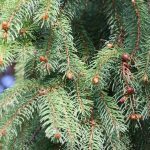
Spruce, Picea: species, growth, plants and care ABC
We encounter spruces in many places in this country. In Central Europe, however, only the Norway spruce (Picea abies) is native. However, there are many species that you can plant out in the garden. Dwarf forms can be kept in the bucket. The easy-care conifers are suitable in the garden as single or group trees. However, you should not plant the shallow roots near house walls or garden paths, as their root force can cause severe damage.
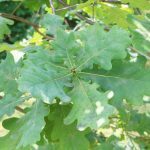
Oak, Quercus: Planting an oak tree | Care A-Z
The oak is one of the most important trees in Germany. With its characteristic leaves and expansive growth, it has stimulated people's ideas for thousands of years and is of great importance in local customs. Quite a few have an oak tree in their garden or are considering planting a new one and thereby expanding it. Fortunately, the oak is an easy-care tree with outstanding character and robust properties.
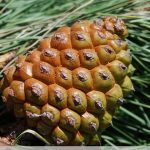
Pine tree, Pinus pinea: Care of the pine tree | Winter hardiness & growth
The pine tree is one of the most famous conifer species in Europe and the Middle East. Recognizable by the characteristic crown and the intense needle smell, it is a popular plant in Central European gardens. The rapid growth of the pine tree enables a state tree to be established at an early stage. When keeping the Mediterranean plant, a few points must be observed so that the plant will do well over a long period of time.

Curry herb, Helichrysum italicum: care and cutting
Are you a fan of curry, Mediterranean spices or aromatic green oases? Helichrysum italicum, better known under the name curry herb, is one from the Mediterranean region Original aromatic and ornamental plant, the leaves and flowers of which are used in numerous dishes can. Adequate care is required in order to be able to enjoy the golden yellow flowers in full splendor and the intense smell. In particular, the wintering of the daisy family must not be ignored.
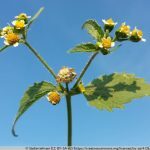
French cabbage, button cabbage, galinsoga: care from A-Z
The French herb also bears the nickname "garden plague", but wrongly if the care of the tasty and healthy herb is right. Since the button herb feels at home almost everywhere, it is also very easy to care for. Because it also grows preferentially at the edges of fields and roads in fields and in many gardens. Farmers are not thrilled when the cabbage appears between their potatoes and beets, but cooks increasingly prefer Galinsoga in the kitchen, as it is very suitable for salads.
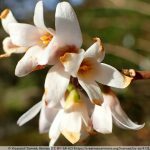
Snowforsythia, Abeliophyllum distichum: care from A-Z
The yellow forsythia is well known: the snow forsythia (Abeliophyllum distichum) is different. It is a real rarity. With its white to delicate pink flowers that cover the wood from March to May, it creates beautiful contrasts in the spring-like garden. They also give off a sweet scent of almonds. Although it can be a real asset, the snow forsythia is rarely found in home gardens.
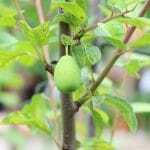
Apricot tree, Prunus armeniaca: Care of the apricot from A-Z
The apricot is still considered exotic, but it is also being cultivated more and more frequently in local regions. And rightly so, because the apricot tree not only adorns the gardens at home with its bright pink flowers, but also bears a multitude of tasty fruits when properly cared for.

Easter cactus, Hatiora: care from A-Z | Spring cactus
The Easter cactus, also known as the spring cactus, is often described as an easy-care diva. This is because it is easy to care for, but has special demands when it comes to flowering. Because if its conditions are not met, it refuses to flower or, quite diva-like, simply throws off buds and flowers. However, if it is satisfied with its location and care, it will thank you every year with a new splendor of flowers.

African violets, Saintpaulia ionantha: care and location
African violets have been popular houseplants for decades as they bloom abundantly. The classic flower colors of the plants are dark purple, white and pink. Today there are around 2,000 hybrid varieties, so that no wish remains unfulfilled when it comes to choosing. The flower color today ranges from white to dark purple, with a wide variety of shades being offered. You can also choose between single and double flowers. The height of the plants including the flower is 10 to 40 centimeters.
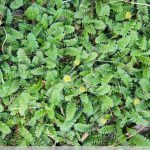
Feather pads, Cotula potentillina: care | Lawn replacement
The plumage is very popular in local areas, especially as a substitute for lawn, because it is relatively easy to care for and undemanding. But it doesn't work entirely without care. Due to the low growth height and the finely structured leaves there is a risk of being displaced. Proper care prevents that. The plant guide explains what this looks like and what to look out for when replacing lawns with plants.

Flower ash, Fraxinus ornus: care from A-Z | Is it poisonous?
The flower ash, which is originally native to the eastern Mediterranean and the mountains of southern Europe, is also becoming increasingly popular in our latitudes. Because of the flowers it has been given the name flower ash. The inflorescences look like small bouquets of flowers hanging in the tree. Despite its origins, Fraxinus ornus is absolutely hardy here too and only needs one as a young tree little protection, otherwise the plant is very easy to care for and therefore good for hobby gardeners with little time suitable.
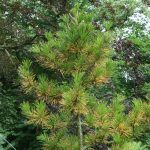
Japanese umbrella fir, Sciadopitys verticillata: care from A-Z
The Japanese umbrella fir is honored there as the sacred temple tree of Japan. In local latitudes, despite its susceptibility to yellow needles, it is still a popular ornamental tree. In its homeland, Sciadopitys verticillata grows up to 30 meters high, in our gardens usually only up to 10 meters. The slowly growing umbrella fir has also become a popular container plant, but it is also often cultivated in urban parks or in one's own front yard.

Japanese column cherry, Prunus serrulata 'Amanogawa': care
The Japanese cherry (bot. Prunus serrulata) is a national shrine in Japan: its beautiful pink flowers attract countless visitors every year to the Hanami festival, the cherry blossom festival. In fact, the ornamental cherry is also widespread outside of Japan and adorns numerous gardens, parks and avenues. The Amanogawa variety, also known as the column cherry because of its narrow growth habit, also flowers magnificent like the species, but takes up less space and is therefore also suitable for front gardens or small ones Gardens.
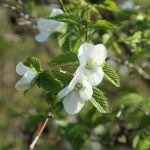
Rosenkerrie, Rhodotypos scandens: Care from A-Z
The Rosenkerrie originally comes from the East Asian region. There the shrub can reach heights of up to five meters. In this country, its growth reaches a maximum height of two meters. Although the Rosenkerrie was to be found in many gardens for a long time, the easy-care, uncomplicated shrub is now a rarity. But don't worry, you can easily get the Rosenkerrie in gardening centers and tree nurseries today.
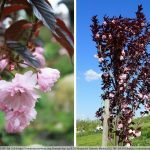
Column cherry, Prunus serrulata 'Royal Burgundy': care information
The Japanese column cherry Prunus serrulata 'Royal Burgundy' is also becoming more and more popular in this country. No wonder, as it usually develops into a colorful and imposing eye-catcher in the garden. However, in order for this to really work, the location and maintenance must be right. Regular cutting plays a particularly important role. Overall, however, it is a relatively undemanding cherry that, despite its splendor, requires relatively little maintenance.

Japanese clove cherry 'Kanzan', Prunus serrulata - care from A-Z
Anyone looking for a pretty tree that is easy to care for is well advised with the ornamental cherry. The Japanese clove cherry 'Kanzan' is particularly popular and embellishes numerous domestic gardens with its pink blossoms. It is an extremely decorative tree that is particularly effective on its own. It is considered to be relatively easy to care for and does not demand a lot from the hobby gardener. For a profuse bloom, however, there are a few factors to consider, from site selection to care. We have summarized the most important information for you so that you are sure to succeed in cultivation!

Evergreen magnolia, Magnolia grandiflora: care from A-Z
Magnolia grandiflora! Everyone would like to have this melodious plant in their home garden. And the tree actually delivers what its beautiful name promises. Not only does its stature grow large with the passage of time, but also its flowers every year. The white splendor smells delicately of lemon, while the green leaves remain present even in winter. But then freezing cold lurks, which this tropical wood does not like so much. A challenge, but solvable.
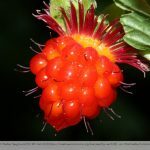
Salmonberry, Magnificent Raspberry, Rubus spectabilis - care from A-Z
The salmonberry, also called splendid raspberry, is one of the exotic fruits in this country. The collective fruits, which resemble a raspberry in appearance, grow on easy-care shrubs. The shrubs are not only suitable as a useful plant, but can also be used as ornamental plants in the garden. But be careful, they reproduce by themselves through runners and can quickly take full possession of the garden.
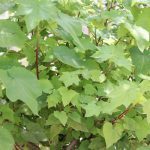
Linden tree, Sparmannia africana: care from A-Z | Is it poisonous?
The name Zimmerlinde is deceptive. What reminds us of a local linden tree with its light green, heart-shaped, hairy and almost translucent leaves is actually an African tree. Indoors, its growth remains modest, but can still reach the ceiling. This linden tree improves the room climate and, according to Far Eastern Feng Shui, also the flow of energy. If it is well cared for in this country, this immigrant sapling even contributes a few enchanting flowers.

Hemp palm, Trachycarpus fortunei - care from A-Z
Hemp palms are not only robust and resilient, but also relatively undemanding at the same time. However, in order for Trachycarpus fortunei to thrive successfully, a few factors should be considered. From the choice of location to professional maintenance and winter storage - we have the most important ones Information summarized for you, so that you can cultivate the popular fan palm with certainty succeed!

Loganberry, Rubus loganobaccus - taste and care instructions
The breeding of modern crops is constantly advancing and is always producing new species. Fruits and berries are particularly trendy here. Young and old enjoy the so-called "Naschobst", which can be wonderfully processed into numerous products, but is also eaten directly from the bush. One of these new berries is the loganberry. Everything you need to know about taste, as well as helpful care tips, is revealed here.
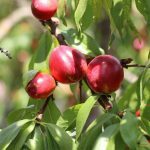
Nectarine tree care from A-Z | Information on diseases & varieties
A wonderfully blooming nectarine tree can also bear juicy, sweet fruits in this country. However, a feel-good atmosphere must be created for him in a targeted manner. However, the harsh climate and the modest number of hours of sunshine do not make it easy for the owner. The ideal location has to be found and maintenance needs to be fine-tuned from A to Z. This is the only way for the nectarines to develop an aromatic taste. Read here in detail what allows this plant to flourish optimally.

Walnut tree, Juglans regia: location, fertilization and care from A-Z
Along with hazelnuts, walnuts are not only one of the most popular nuts at Christmas time. No wonder: it tastes at least as good in a salad as it does in a cake or ice cream. It is almost imperative to grow walnuts in your own garden. In fact, with its massive appearance and lush green leaves, a walnut tree looks extremely good in the garden. And with the right care, a rich nut harvest is also guaranteed.

Standard rose care from A-Z | Cutting rose stems
The care of standard roses is the supreme discipline for hobby gardeners. An optimal location alone is not enough to showcase the queen of flowers as a picturesque rose stem. Proper planting, fertilizing, watering and cutting round off successful cultivation perfectly. It is important to note important differences in comparison with classic bed and shrub roses. This green guide will familiarize you with the flawless process of caring for high-stem roses from A-Z. A beginner's guide explains when and how to cut rose stems in an exemplary manner.
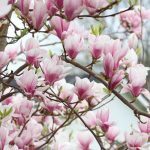
Tulip magnolia, Magnolia soulangiana: care from A-Z
The tulip magnolia is mostly only known as magnolia in Europe and is one of the most popular ornamental trees of the genus in the local latitudes. The hybrid is used exclusively as a decorative tree and not like the related evergreen magnolia (bot. Magnolia grandiflora) as a supplier of fragrances or wood. It can be kept outdoors in Germany without major problems, as long as the care and location are right and it belongs to the ornamental trees with early flowering.
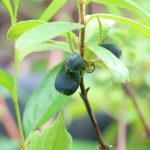
Honeyberry, Lonicera Kamchatica: Care of the Mayberry from A-Z
In terms of taste, it is reminiscent of the blueberry, but it is the may berry or Honey berry, which ensures fruity pleasure in your own garden. The cheeky fruit is easy to care for, decorative and hardy and is actually a must for fruit lovers.
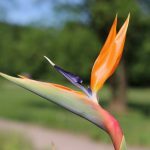
Parrot flower, Strelitzia: care from A-Z | Is it poisonous?
The strelitzia, also known as parrot or bird of paradise flower, is an exotic plant in the plant kingdom thanks to its extravagant flowers. It is multi-colored, with strong orange and blue tones, and outwardly resembles the head of an exotic bird. Under optimal conditions, it lasts for at least four weeks, with a flower reaching a length of up to 20 cm. In our latitudes, this extraordinary plant is not hardy and is therefore cultivated as a houseplant in a pot.
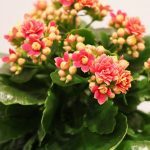
Flammendes Käthchen, Kalanchoe blossfeldiana - care from A-Z
The Flaming Käthchen is a robust plant that does not make great demands on care. Originally the little beauty from Madagascar was only available with red flowers, but now it also delights us with yellow, pink, white and purple flowers. However, in order for these to develop, a little trick is required.

Snow banana, Ensete glaucum - care from A-Z
The snow banana is a robust banana tree from the Ensete genus, which impresses with its rapid growth and imposing stature. It not only grows up to five meters high, but also forms leaves that can reach a length of two meters. Only with a lot of luck does it develop fruits that are inedible for humans but contain seeds. These are used for the propagation of the Ensete glaucum, as other methods do not work.
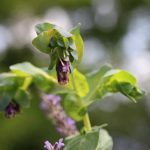
Large wax flower, Cerinthe major: care from A-Z | Is it poisonous?
The large wax flower is a distinctive flower and comes from southern Europe. There the plant is widespread especially in the Mediterranean area and is therefore used to warm and bright site conditions. Since the plant does not have particularly high demands in terms of location and maintenance, it can be cultivated in the local latitudes without any problems. Due to the unusual shape and the intense coloring, the large wax flower stands out as a rarity in the garden bed.

Ilex Crenata - Care from A-Z | Fertilizing, cutting & propagating
The Japanese holly, botanically Ilex crenata, is an evergreen, compact growing shrub. It is enjoying growing popularity, especially in the garden, as a replacement for bed frames made of boxwood. Visually almost indistinguishable from the boxwood, the Japanese holly is not susceptible to frequent Fungal diseases and pests that occur, such as the boxwood moth, attack entire hedges and the plants in no time can die. In addition, the ornamental shrub is not very expensive to maintain.

Hoya kerrii: Caring for the heart leaf plant from A-Z | Is it poisonous?
The heart leaf plant can be found in nurseries and flower shops, especially in February for Valentine's Day. However, this is usually only a single, thick-fleshed leaf that was planted as a cutting in the earth. Hoya kerrii is actually much larger and is a popular flowering house plant in the local latitudes. But since it is slightly poisonous, there should be no small children or free-range or free-flying pets in the household.
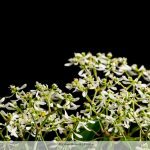
Magic snow, Euphorbia graminea - cultivation, care and overwintering
With fragrant, white veils of flowers, magic snow is there wherever a magnificent gap filler is desired. The graceful gypsophila also lives up to its name as an opulent summer bloomer in the bed and on the balcony. This guide will introduce you to professional cultivation and guide you step by step through uncomplicated care. How you successfully overwinter Euphorbia graminea is no longer hidden from you.

Elephant Ear, Alocasia: Care Instructions | Yellow leaves - what to do
If you want to bring a bit of jungle into your apartment or winter garden, the so-called elephant ear is the best choice. It actually conjures up a touch of rainforest in your own four walls. The reason for this is not least its huge, wide-spreading leaves. The amazingly easy-care plant is something like the ideal indoor tree that comes into its own especially in large rooms and halls.

Saxifrage, Saxifraga arendsii - location, care and flowering period
Moss saxifrage belongs to the genus saxifrage. The small upholstered perennial is an ideal ground cover, which is popular due to its variety of varieties. Numerous colors provide appealing accents in the garden during the flowering period in spring, because the moss-like cushions form many flowers that can be combined painterly. Thanks to their undemanding nature, they require little maintenance, even in winter, as long as the location of Saxifraga arendsii is correct. They don't get drought or too much sun.

Rock seeds, Lithodora diffusa - species, location and care
Stone seeds are attractive plants from the Alpine region of southern Europe and are very popular with gardeners due to their modesty. The flowers in different colors add a splash of color in the garden, because the predatory leaf plant can be good for planting rock gardens and borders, as well as lush ground cover. The stone seed is an evergreen plant that is often offered as a perennial, although it is a dwarf wood.
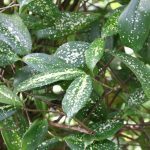
Dragon tree, Dracaena surculosa - care instructions from A-Z
The so-called dragon tree is certainly one of the most thankful and visually impressive houseplants. It can reach an impressive size and is then not infrequently reminiscent of a palm tree. Strictly speaking, it is not even a real tree, but an asparagus plant. Fortunately for all plant lovers, the dragon tree is extremely frugal and does not require a lot of maintenance. Dracaena surculosa is even considered to be extremely easy to care for. Even beginners will get along wonderfully with this houseplant.

Dragon tree, Dracaena deremensis - care and varieties
Dragon trees are one of the most popular indoor plants. On the one hand, they are immensely impressive, but on the other hand, they don't involve a lot of work. So it's no wonder that they like to bring plant lovers into their homes. The most widespread is the species Dracaena surculosa, which is now considered the epitome of the dragon tree. Dracaena deremensis, on the other hand, is much rarer. This species is somewhat smaller in growth and height, but no less attractive.
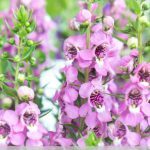
Angelonia angustifolia, Angel Face Flower - Care | Is it hardy?
Angelonia angustifolia - a beautiful flower that shouldn't be missing in a lush summer garden. As a rarity in this country, the majestic beauty is a guaranteed eye-catcher and makes hobby gardeners look jealous.

Noble geraniums, Pelargonium grandiflorum: care from A-Z
With a sea of trumpet-shaped flowers and a seductive scent, Pelargonium grandiflorum are a feast for the senses. The noble geranium delights as lavish houseplants and transforms the balcony into a floral summer fairy tale. The South African flower species has long made a name for itself as a floral talent factory for various balcony plants of the year. The following profile expresses the unique attributes of this noble geranium variety, which in 2006 even became the flower of the year in Baden-Württemberg and Bavaria. A practical guide for care from A-Z leaves no questions unanswered.

Red and yellow pitcher plant, Sarracenia - care from A-Z
The pitcher plant is one of the rarer garden and balcony plants that are guaranteed to be an eye-catcher with their exotic appearance. The marbled, long hose with its hood is a special type of plant that is so seldom to be admired. The pitcher plant is a carnivorous plant that feeds on insects. Both indoors and outdoors, it traps the microorganisms and thus procures their nutrients. The care and cultivation in the local regions requires a little caution, but pitcher plants are quite easy to care for.
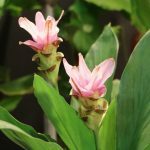
Turmeric plant, saffron root - location and care | Curcuma alismatifolia
Saffron root comes from the ginger family. Its home is in Australia and Asia, but in this country it can also be cultivated as a houseplant or garden plant. It is a bulbous plant that not only grows in height but also in width. Curcuma alismatifolia - as the botanical name is - is not evergreen, it begins to lose its leaves at the latest at the beginning of winter. The complete leaves are gradually thrown off and at the latest then it is time for wintering. In spring, the first flower stems form again, the flower color varies from purple to pink to white. Curcuma is very popular among hobby gardeners, especially because of its large, lush green leaves and beautiful flowers.
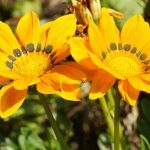
Gazanie, Gazania - sowing, care and wintering of midday gold
The gazanie, also known as midday gold, closes its flowers in cloudy weather. The graceful plant belongs to the daisy family and is native to East and South Africa. The sixteen species known worldwide bloom in various colors. In the local latitudes they are known as annual plants, but they can be one brought little skill and knowledge even over the cold winters and thus cultivated for several years will.

Laburnum - location, planting and care instructions
The small genus of the laburnum has enjoyed great popularity as an ornamental plant for several centuries due to the intense yellow color of the flowers. Its modesty and adaptable nature make Laburnum the ideal ornamental shrubs that do not require a lot of care and can even withstand winter without protection. Nevertheless, you have to exercise caution if you have a laburnum in the garden, as the petals are extremely poisonous for humans, pets and farm animals.
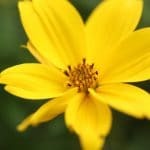
Goldmarie, Zweizahn, Bidens ferulifolia - varieties and care instructions
The Goldmarie 'Bidens ferulifolia' also known as two-toothed, is a perennial and one of the most thankful summer bloomers, with more than 250 varieties worldwide. This attractive plant owes the name 'two-tooth' to its toothed fruits. Its yellow, orange, reddish or two-tone flowers develop a lush pile that sets colorful accents in beds, bowls, pots or hanging baskets. The abundance of flowers continues from spring to autumn.
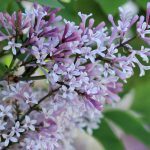
Dwarf lilac, Syringa meyeri - care in the garden / tubs and cutting
The dwarf lilac shows itself as the small edition of the lilac. It is in no way inferior to the conventional lilac in terms of fragrance, compactness and extraordinarily lush abundance of flowers. Not only does it look good in the flower bed, its small format is especially suitable for cultivation in pots. Everything you should know about caring for dwarf lilacs is detailed at Plantopedia.

Marguerite trunks: everything about the care of marguerite trees
Marguerites are among the most popular plants in the garden and balcony and are excellent even in the winter garden. In comparison to the native meadow marguerite (bot. Leucanthemum vulgare) is suitable for keeping as a tree and thus enables completely different design options. Her origins, the Canary Islands, make her a true sun worshiper who is easy to hold and hardly requires any attention. Except over the winter, because the island plant cannot tolerate the cold.

Date palm, phoenix palm - care from A-Z and overwintering
The date palm fills rooms and adorns gardens with a touch of the Caribbean. It has a low maintenance requirement and is considered an undemanding plant that, depending on the species, can even overwinter outdoors if properly prepared. You can find out what it is and what else you should know about the Phoenix palm at Plantopedia.

Barberry, Berberis vulgaris - care, cutting and propagation
The barberry, also called sour thorn or vinegar berry, is a very old plant that is also native to Europe. Since it grows particularly quickly and densely, the shrubs are very suitable as hedge plants. Berberis vulgari is also a welcome plant for many animals and insects. Its golden yellow flowers serve as food for bees and other insects. They are a welcome nesting and breeding place for birds. Hedgehogs also like to use the barberries as a hiding place.

Washingtonia robusta, petticoat palm - care from A-Z
Washingtonia robusta is a species of palm that brings the flair of California and Mexican sandy beaches home. In terms of care, it is considered to be easy to handle, but it still has some basic requirements in order to be able to grow vigorously and stay healthy for a long time. At Plantopedia you can find out how you can meet the low maintenance requirements, how you can easily reproduce and overwinter this fan palm and whether it is poisonous.
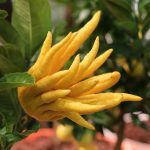
Lemon, Buddha's hand, Citrus medica - care of the lemon
The lemon 'Buddha's hand' is probably the most unusual form of citrus medica. It comes from Southeast Asia and is mainly used for the production of citron pate. Their scent is sweet. The flowering time is all year round. The approx. 10-20cm long fruits are reminiscent of hands and fingers: hence the name 'Buddha's hand'. In Buddhism it is used as an offering in temples.

Pipe bush, Philadelphus - care instructions
The pipe shrub, which is also known as false jasmine, scented or peasant jasmine, is a magnificent and undemanding ornamental shrub. It has become an indispensable part of country house or cottage gardens. Its pure white, double or unfilled flowers, which often exude an intense fragrance, are particularly elegant. In individual position, in combination with other trees or as a hedge plant, it unfolds its full splendor.
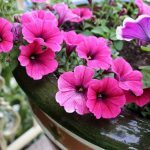
Petunias, hanging petunias, petunia - care and wintering
Their bright and varied colors make hanging petunias a popular plant. Due to their climbing habit, the nightshade family can often be found on balconies and wall parapets. The flowering time of the beauties extends from mid-spring to autumn. In order to optimally support petunias, a number of requirements must be met in terms of location and care.

Phalaenopsis, butterfly orchid - care & repotting
The Phalaenopsis is one of the front runners among the indoor plants and the most popular of all orchids. The shapely and blooming plants come in countless color variations. Even if orchids are often decried as little divas, the Phalaenopsis tolerates minor care errors, so that even beginners can try their hand at them. With appropriate care, they impress many weeks a year with their breathtaking blossoms.

Yucca palm, palm lily - care instructions
The yucca palm, called the palm lily because of its lily-like shape, is a timeless plant. It once adorned hippie apartments from the 1960s and now beautifies modern living spaces. The yucca became popular and known for its exotic appearance. Amazingly, this plant genus is an 'asparagus plant' originating in Central America. Despite its great instinct for self-preservation, the yucca cannot do without human care.
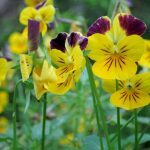
Garden Pansy, Viola - Planting and Care Instructions
With its almost infinite variety of colors from white to blue and purple to orange, yellow and red as well as the long flowering period, garden pansies (viola) are among the classics in public and private Gardens. Especially in spring they provide the first splash of color in the otherwise dreary garden. But they are also one of the last plants to decorate house entrances and balconies in late autumn.
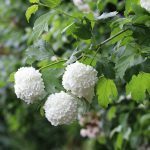
Common snowball, Viburnum opulus - care instructions
Common snowball is the name of this shrub, which every garden and balcony has a beautiful blossoms and in autumn with berries a fresh color accent in the increasingly colorless one Environment sets. The perennial plant is winter-proof and will thrive for many years if you meet a few conditions, which you will find out in the detailed care instructions for the Viburnum opulus.

Three-masted flower, tradescantia, god's eye - care instructions
Not only do these extraordinary wildflowers offer something completely different for the garden, they are also easy to grow and require little maintenance. We are talking about the three-masted flower, also called God's eye or Wilder Heinrich. The three-winged flowers usually appear in blue or purple, sometimes pink or white. Some species are indoor plants, others are suitable for outdoor use.
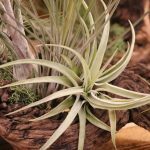
Tillandsia, Tillandsia - species & care instructions
With over 550 species, the plant genus Tillandsia is considered to be the most species-rich within the bromeliad family (Bromeliaceae). Due to their ease of care and their attractive leaves, Tillandsia have enjoyed increasing popularity as a houseplant for years. The shape and color of the plant, which is also often referred to as an air plant, amaze many. The following care instructions show how it grows and thrives optimally.

Yew hedge, yew, taxus - planting, care and cutting
The yew tree, which can be found as a yew hedge or solitary in numerous gardens, is very popular. But this plant also looks beautiful in the bucket and sets color accents with its red fruit berries. It is easy to look after but requires regular trimming. The planting, care and cutting instructions show you how you can meet the needs of a yew tree.
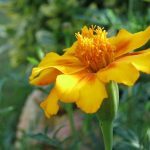
Tagetes, marigold - growing from seeds and care
Throughout the summer, the brightly colored flowers of the marigolds shine in competition with the sun. Already in the 16th In the 19th century, the plant came to Europe from Central America and has been a long-runner in our gardens ever since. Thanks to its modesty, it does not need daily attention from the gardener. How to do everything correctly with the care of the marigold, you will learn in this guide.

Bird of Paradise, Strelitzia reginae - care instructions
The bird of paradise flower exudes a tropical flair with its magnificent flowers and large green leaves. Like an exotic fan, the orange-yellow and blue glowing petals stretch towards the sky. You can't tell by looking at it, but the Strelitzia reginae is comparatively undemanding. She thanks good care with intensive growth and large flowers. The care instructions explain the best way to do this.
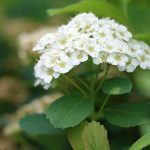
Spierstrauch, Spiraea - species, care - instructions
The sparaceous shrub is one of the most popular garden plants, as there is hardly a plant that is less demanding in terms of care and location. It belongs to the rose family and is native to the Nordic climate. Every year the different species of Spiraea surprise with an abundance of flowers and colors and blend wonderfully into the garden landscape.
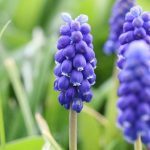
Grape hyacinth, Muscari - cultivation from seeds + care instructions
The graceful grape hyacinth, which got its name because its flowers are reminiscent of upside-down grapes, comes from Turkey. The mostly blue to purple flowers appear between April and May, so this is an early bloomer. The decorative onion plant was introduced to Europe from Turkey between 1560 and 1620.
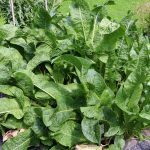
Growing horseradish - sowing, planting, caring for and harvesting
Horseradish, also called horseradish, is one of the well-known root vegetables and spices. However, most of them use it in a preserved, ready-to-use form. Few hobby gardeners cultivate their own horseradish these days. Growing Armoracia rusticana is not that difficult if you know how it works. In this guide you will find out how you can cultivate your horseradish yourself in the garden.

Lonicera, honeysuckle, garden honeysuckle - care
The garden honeysuckle (Lonicera) is an old plant that was often found in cottage gardens in the past. The woody climbing plant effortlessly climbs house facades and shed walls. The fascinating, tubular flower clusters of the honeysuckle appear in spring and have an intense, sweet smell. Lonicera is also robust and hardy, but a few important points should be met in terms of care.
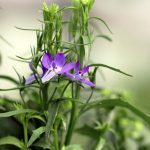
Male faithful, Lobelia erinus, blue lobelia - care instructions
The beautiful Männertreu is very suitable for filling gaps in the bed. More than that, this bluebell plant shines in fascinating blue flowers. Magical flowers open tirelessly throughout the summer and fill some corners that would otherwise remain bare. Known as Lobelia erinus, you should know that all parts of plants are poisonous to humans and animals.
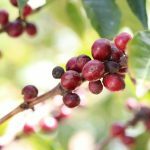
Coffee plant, Coffea arabica - growing your own coffee + care
The coffee plant Coffea arabica, also called Java or mountain coffee, is one of the exotic beauties in your own four walls. As a rule, coffee is only known as ground or roasted beans. The associated red fruits can only be seen if you own a coffee plant. In order for these plants to produce fruit at all, the right care is essential.

Hard-working Lieschen, Impatiens walleriana - care instructions
The industrious Lieschen is an extremely popular guest in flower beds, balcony boxes, hanging baskets and pots at home. The decorative ornamental plant blooms long and intensively and rewards good care with a veritable sea of flowers. The care instructions explain everything you need to know about keeping the Impatiens properly and appropriately walleriana and shows how you can optimize growth and flowering with little effort can promote.
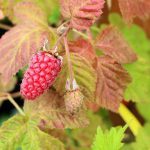
Growing raspberries - planting, care and cutting
Raspberries from our own cultivation outperform the fruits on the edge of the forest in every way. If you combine the modern summer and autumn varieties, you extend the harvest time for juicy, sweet berries to several months. The requirements for planting, care and pruning are less complex than it seems. These instructions will guide you step by step through the successful cultivation of the long-lived berry bushes.
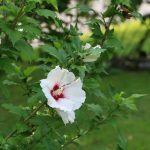
Hibiscus - care instructions as a garden and houseplant
As a houseplant, the hibiscus needs a little more care than in the garden. This is normal because the conditions in the bucket are different from those in the field. Nevertheless, it is worth taking a look at the care instructions, because the so-called Chinese Zimmerhibiskus feels very comfortable indoors and pampers its owners with beautiful Blossoms.
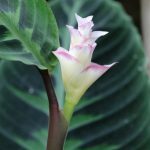
Korbmarante, Calathea - species and care instructions
The basket marante is an extremely decorative leaf ornament. Their elegant leaves stand out with their different colors and distinctive patterns. In tropical regions they were used as roof cover and to weave baskets, which earned them the name 'Calathea'. It comes from the Greek and means something like 'basket'. All of this makes this typical jungle plant an attractive and extraordinary houseplant.
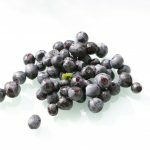
Growing blueberries / blueberries - planting, cutting and harvest time
Blueberries will always find a place even in small gardens. Over several weeks a year, they produce a multitude of aromatic and healthy fruits. Even the bell-like flowers and autumn leaves are very decorative. Most of the cultivated blueberry varieties are grown in the garden, and wild blueberries are less common. For the much smaller wild blueberries, the conditions in the home garden are usually not ideal.

Growing blackberries - varieties, care and cutting
Their blue-black color gives blackberries a magical aura. Their fruity aroma and seductive scent tell of carefree summer days in grandmother's garden. High time to grow the delicious blackberries yourself. Modern strains are neither scratchy nor demanding, as long as you dig a little deeper into the subject. Here you can find information about recommended varieties, professional care and correct cutting.
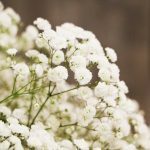
Baby's breath, gypsophila, panicle of gypsophila - care instructions
With its graceful appearance, the gypsophila is probably one of the most charming plants alongside roses. They not only adorn the bouquet in an extraordinary way, but also the flowerbed. The gypsophila transforms bald spots over a large area and can be combined with almost any flower. The hobby gardener has the choice between an upright growing and a creeping gypsophila, which is also known as the panicle of gypsophila.
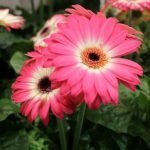
Gerbera as a houseplant - care instructions
The gerbera belongs to the daisy family and is one of the most popular cut flowers out there. If you don't just want to admire this true beauty among plants in the garden and in the vase, you can easily bring it into your home as a houseplant. This means you can enjoy the beautiful gerbera all year round.

Triplet flower, bougainvillea - planting, care and wintering
As a floral ambassador of tropical blooms, the triple flower attracts everyone's attention in the summer garden. The exotic bougainvillea owes its catchy name to three delicate, cream-colored flowers framed by three brightly colored, large bracts. From spring to autumn, the wonderful ornamental wood inspires with its opulent flower dress. So much splendor needs to be looked after professionally. All information on planting, care and wintering can be found here.
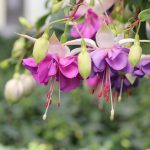
Fuchsias, fuchsia - planting, care and wintering
Fuchsias have made a name for themselves as classics in creative plant compositions for the summer garden. Thanks to the hardy varieties, the colorful festival with the unmistakable flowers is not limited to the balcony and terrace. Find out here how to skillfully plant the woody beauties of flowers in pots and beds. Benefit from detailed instructions on care and wintering.
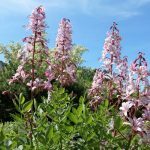
Burning bush, diptam, dictamnus - care instructions
The burning bush is an intensely lemon and vanilla scented perennial with elegant foliage and pretty inflorescences. Its name is based on a rare and fascinating feature. On hot summer days, their capsule fruits give off ethereal inflammatory vapors, so that at dusk, when there is no wind at the same time, small bluish flames light up. That makes this plant a real rarity in the home garden.
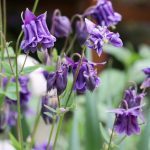
Columbines, Aquilegia - Growing the plant and caring for it
One of the oldest flowering plants still occurring today are the columbines. One has this plant with outstanding elegance and the futuristic looking flowers in the Human history has given numerous names: elf shoe, god hat or fool's cap, to name just one to name a few. In this guide you will learn how to cultivate the easy-care columbines in your own garden.
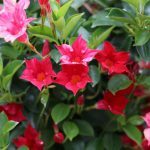
Dipladenia, Mandevilla - varieties - care instructions and overwintering
The Dipladenia was originally a liana plant and is now cultivated as a hanging climber or subshrub. This exotic-looking permanent bloomer is sensitive to frost and is therefore mainly kept as a houseplant. These plants are real blooming wonders. Its bright flowers shine in a wide variety of colors and shades and form a striking contrast to the green foliage. Plant lovers also appreciate the uncomplicated care of this extraordinary plant.

Anthurium, anthurium, flamingo flowers - care and reproduction
Everyone knows it, the bright red flamingo flower. With lush green leaves and the beautiful red bracts, it sets accents in the private home or in business premises. In our special care instructions for the flamingo flower, we explain how anthuriums are cared for, as these are originally called tropical plants.

Peonies, paeonia - planting, care and cutting
The splendor of the flowers is a revelation for every gardener, from which his grandchildren can still benefit. Peonies provide a floral wow effect in the spring garden for decades. The romantic cottage garden plants combine a unique abundance of flowers with robust longevity. With these advantages, they convince both as a perennial and as a bushy shrub. These instructions explain in detail how to properly plant, care for and prune Paeonia.
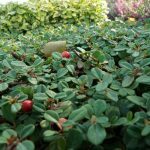
Cotoneaster, cotoneaster - care instructions
With its white flowers, bright red ornamental fruits and green oval leaves, the cotoneaster is one of the most colorful and attractive ground creeps in this country. The frugal, hardy and hardy plant is therefore widespread in Central European gardens, cemeteries and parks. The care instructions show how to properly cultivate the crawfish. The ornamental plant already rewards a minimum of care with many flowers.
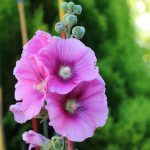
Hollyhocks, hollyhock, Alcea rosea - care instructions
With its bright flowers, the Alcea rosea is an ornament for every garden. The height of the hollyhock makes it an eye-catcher. The perennial attracts attention with its oversized flowers in a wide variety of colors. It is also known under the name peasant rose or poplar mallow. In the summer bed, the sun worshiper ennobles every accompanying plant. With these care instructions you will find out what you should pay particular attention to.
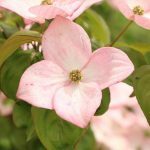
Dogwood, flower dogwood, red dogwood, cornus - care
A good friend of the gardener is the cornus, dogwood, also known as red dogwood or flower dogwood. In addition, it is usually not missing in any garden and also looks good in parks or on roadsides. It delights the eye with its leaves until late autumn, in spring with the beautiful inflorescences and in winter with the strikingly colored bark. With optimal care and location, it is a frugal plant that therefore requires little effort and thrives best as a solitary plant.

Japanese maple, red Japanese maple, Acer palmatum - care instructions
Japanese maple is a fundamental element in traditional Japanese garden design, especially its red-leaved varieties. Red Japanese maple is also extremely popular among German hobby gardeners. In addition to green varieties, as pond border planting, background or solitary plants, there are impressive color combinations. The splendid autumn colors of the filigree leaves, which show up in different shades of red, and the coral-red bark of some varieties make the unique ornamental value of this woody plant.
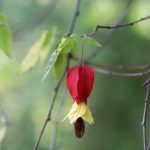
Beautiful mallow, abutilon, room maple - care and overwintering
Even if the mallow is also known as the indoor maple, the decorative plant loves to spend the summer outdoors as a container plant on the balcony or terrace. But in winter it has to be kept warm because it is not hardy. It forms its decorative flowers in a wide variety of colors, especially in the summer months.
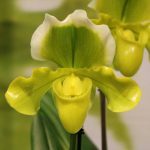
Lady's slipper orchid, Venus shoe, Paphiopedilum - care from A-Z
One of the most popular orchid species on the local window sills is the lady's slipper orchid, also known here as the Venusian shoe. Due to its origin in Thailand, the Philippines or Borneo and Sumatra, it is used to subtropical climates and is therefore very sensitive to cold. Cultivation in the bucket is therefore essential. The care of the lady's slipper orchid is a bit time-consuming, but if it is given the right one, it will thank you with many beautiful flowers and a long life.
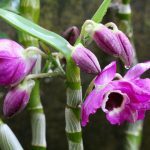
Dendrobium nobile - care, cutting and propagation of the orchid
Dendrobium nobile is also known in Germany as the grape orchid, as the numerous flowers almost look like stand together in vines and, in contrast to the moth orchid (Phalaenopsis), formed directly on the stem will. The East Asian orchid genus delights in blooming over the cold season and enchants with one pleasantly intense fragrance that can be found in all living rooms with the right care thanks to the numerous flowers unfolds.

Ufo plant, Pilea peperomioides - care + help with leaf loss
The ufo plant, botanically Pilea peperomioides, is a rare but extremely decorative ornamental plant. Its name comes from the taler-shaped leaves, which are reminiscent of UFOs and also give it a very special charm. Pilea peperomioides can be grown as a houseplant all year round. The robust plant does not make great demands on maintenance, but you should be careful with the watering. Since it can withstand high levels of humidity, it is also ideal as a decoration for the bathroom.

Vanda orchid - keeping, care in the jar and propagation
Deep blue flowers and a national size characterize the Vanda orchid, which, along with phalaenopsis and grape orchids, is one of the best-known indoor orchids in Germany. Despite its flowers and the intense, lovely aroma, it is not the easiest orchid and requires a lot of care and a suitable location. Its blaze of color makes it a popular flower that, when kept appropriately, likes to grow tall and sprout strongly.

Tortoiseshell, Fibigia clypeata - care information
Because of its leaves, the tortoiseshell is often confused with the crown carnation, which has a similar style. Fibigia clypeata is a popular perennial for the Mediterranean dry garden because it can easily cope with little moisture. Above all, their location in the rock garden makes them a welcome guest who is quite undemanding in terms of care. In addition, it does not need winter protection down to -18 ° C, which makes it ideal for many projects.
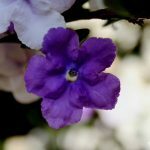
Brunfelsia, Brunfelsia uniflora - care instructions
The flora of the tropics has a lot to offer. In addition to orchids, the fragrant Brunfelsia flowers intoxicate with their aroma and appealing worlds of color. In addition to Brunfelsia americana and Brunfelsia lactea, Brunfelsia uniflora, also known as Manaka, is a real eye-catcher over the winter. Once the blue flowers bloom in all their glory, the dreary winter is gone. All you need to do is care for the poisonous drop plant.
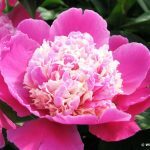
Chinese peony, Paeonia lactiflora 'Cora Stubbs' - care information
Peonies have been cultivated by humans for over 2,000 years and are not only a feast for the eyes, but also seduce the nose with their characteristic aroma. The variety Paeonia lactiflora 'Cora Stubbs' presents itself as a Chinese peony with the expansive Japanese flower shape and a pleasant height. Similar to other peonies, care is quite simple, as the plant is robust and can live for more than 50 years.
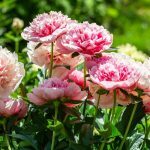
Paeonia Hybrid Peony Etched Salmon - Care Information
The peony with the name Etched Salmon is a cultivated form of the classic peony from 1981 and comes from the USA. The hybrid is very popular due to its perfect bloom and is often used for weddings in the bridal bouquet, as the color is not too intrusive and elegant. Like other peonies, this hybrid is also quite easy to care for if the location is right and there is sufficient watering.

Hare bells, Hyacinthoides - species, care and reproduction
When the garden dresses in a deep blue in springtime, the bells of rabbits present themselves in all their beauty. Hyacinthoides is a poisonous ornamental and scented plant that likes to spread out in the garden and seduce you with its picturesque color and aromatic scent. The downward-hanging bells are what makes this plant so popular and the more specimens there are in the garden, the more intense the scent becomes. A true herald of spring!
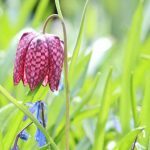
Chess flower, chess board flower, Fritillaria meleagris - care from A-Z
The chess flower lives up to its name: It is characterized by hanging flowers, the pattern of which is reminiscent of that of a chess board. Beauty is rarely found in the wild. It is all the more worthwhile to cultivate the checkerboard flower at home - whether in the garden, on the balcony or in the apartment or house. The article explains in great detail what needs to be considered when caring for this perennial herbaceous plant.

Zebra-Haworthie, Haworthia fasciata - care, tips & tricks
The Zebra Haworthie is an easy-care, very undemanding plant of the succulent type that can adapt wonderfully to its surroundings. Due to its robustness, it fits perfectly into the hands of beginners. Haworthia fasciata grows almost everywhere, only in winter it is a bit sensitive and needs to be moved into the house when the temperature is below zero. To ensure that you can enjoy this relatives of the aloe vera for a long time, there are still a few care tips that should be observed.
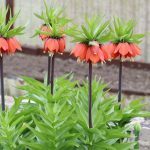
Imperial crown, Fritillaria imperialis - information on care and reproduction
The imperial crown (bot. Fritillaria imperialis) is a true ornament in every garden with its impressive flowers. It can be planted very well individually, with its size it attracts attention everywhere. However, a whole group of imperial crowns is very decorative. However, because the imperial crown is poisonous, it should be kept out of the reach of young children. It should be ideal for driving voles out of your garden.
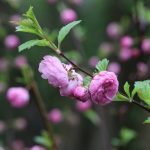
Almond trees, almond bushes, Prunus triloba - care and pruning
The almond tree delights garden owners with delicious fruits, although in Central Europe it is mainly planted as an ornament because of its fantastic abundance of flowers. For this, however, the Prunus triloba requires a certain amount of specific care measures. With the professional care instructions from the plant expert, it works without any problems.
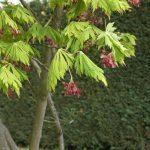
Japanese maple, Acer japonicum - care instructions
The Japanese maple, botanically called Acer japonicum, is considered a splendid specimen among the maple plants and is the epitome of beauty and vitality. The short-stemmed small tree has been cultivated in Japan for hundreds of years. The color highlight comes with the beginning of autumn, when the leaves of the maple turn a breathtakingly bright orange to fiery red. Many varieties also have a lot to offer visually in spring and summer.

Ranunculus, Ranunculus asiaticus - plant and care for them correctly
Ranunculus (Ranunculus asiaticus) are reminiscent of the noble English roses with their beautiful, double flowers. With its countless flowers, which are available in almost any color and also in two colors, the ranunculus is one of the most attractive harbingers of summer. However, the pretty flower has nothing in common with the rose. Already in the 16th In the 19th century, the buttercup plant came to England from Turkey and for a long time was as important as tulips.

Ball primrose, Primula denticulata - care from A-Z
The ball primrose (Primula denticulata) is a magical early bloomer. It immediately impresses in the garden bed with its spherical or ball-shaped flowers and sets the mood for the coming spring. The ball primrose is also particularly suitable for locations in partial shade, as well as for perennial beds, rock gardens and even as pond border planting. You can also find a nice spot in the planter or balcony box.
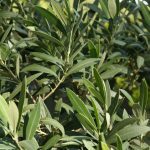
Olive tree, olive tree, Olea europaea - the basics of care
The olive tree, botanically called Olea europaea, is one of the oldest cultivated plants. The wood, which in old age forms a characteristically gnarled and primeval looking trunk, has its origin in the countries around the Mediterranean. We can also grow olive trees and even bear fruit. The prerequisite for this, however, is that some basic rules are observed. Because of the limited winter hardiness of the tree (Olea europaea), proper wintering is essential.
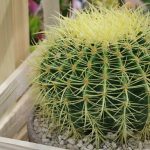
Mother-in-law chair, gold ball cactus, Echinocactus grusonii - care
The golden ball cactus (Echinocactus grusonii), due to its growth shape, which is quite similar to seating furniture, and the long, sharp ones Spines, nicknamed the "mother-in-law chair", is probably one of the most popular in room culture Cacti. In fact, the species is easy to care for and can also grow very old and large. Over the years, the rapidly growing gold ball cactus develops an imposing size. The yellow flowers only appear on specimens from an age of around 20 years.

Finger shrub, five-finger shrub, potentilla - instructions for care
The finger bush is beautiful and easy to care for - no wonder that many hobby gardeners appreciate it very much. Nevertheless, even with this relatively undemanding plant, it is important to pay attention to some details in order to be able to enjoy its splendor undisturbed for a long time.
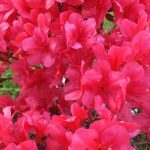
Rhododendron - care from A-Z - basics + expert knowledge
Rhododendrons are a genus of the heather family. The genus itself now includes a good 1,000 species. They range from small to shrubs that can grow to be several meters high. There are also almost no limits to the flower colors. Botanically, azaleas also belong to the rhododendrons. However, the plant lover differentiates between the deciduous azaleas and the evergreen rhododendrons. If the plant is to be planted in the garden, it is usually an evergreen rhododendron.

Lucky chestnut, Pachira aquatica - the basics of care explained
There is something majestic about chestnut trees in the wild. They especially inspire with their large, decorative leaves. If you do not have a huge garden, you do not have to do without the sight of such a plant: The lucky chestnut, botanically Pachira aquatica, is also available as a houseplant. This article describes everything you need to know about caring for your beauty.

Clivie, Clivia - Care from A-Z - Getting clivia to bloom properly
The Clivie is one of the most enchanting flowering plants available in Germany. The older it gets, the more splendid it will thrive, provided it is properly cared for and the plant is optimally prepared for the flowering season. Detailed care instructions with tips on what to look out for can be found at the plant expert.
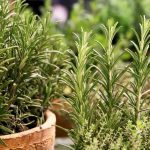
Rosemary, Rosmarinus officinalis - care instructions
Rosemary is a perennial herb in the mint family. The plant comes from the western Mediterranean region and is an indispensable spice in Mediterranean cuisine. As a medicinal plant, rosemary helps against digestive problems and high blood pressure. The herb can be cultivated very well in the garden or in a pot.

Window leaf, five-finger leaf, Monstera deliciosa - care + cutting
Of the total of around 50 Monstera species, the Monstera deliciosa, also known as window leaf or five-finger leaf, has found its way into many living rooms. There is the typical green variety and one with variegated leaves. Typical of all species are the long aerial roots, which serve as an adhesive organ and supply the plant with water and nutrients. Under optimal conditions and after about 10 years at the earliest, the window leaf can even bloom and develop fruits.
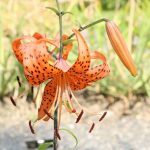
Fire lily, Lilium bulbiferum - location, flowering period and care
The fire lily belongs to the lily family and, with its fiery orange blossom, is an attractive eye-catcher in every garden bed. It is particularly widespread in the European mountains and in the Balkans. Since Lilium bulbiferum is an onion plant, it can be cultivated for several years. With the right care, the fire lily will grow between 90 cm and 120 cm tall and unfold its graceful flowers in summer.

Woodruff, Galium odoratum - characteristics and pictures
Woodruff is a perennial plant from the red family. This spring bloomer is native to the deciduous forests of Europe and Western Asia. Woodruff is a popular ingredient in lemonades due to its slightly bitter and fresh taste.
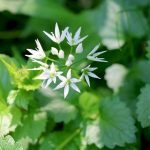
Wild garlic, Allium ursinum - profile and pictures
Bear's garlic is a perennial plant from the leek family. The so-called "forest garlic" grows on streams, but also in forests where it is damp and shady. But be careful, the wild garlic is often confused with the lily of the valley and the autumn crocus and these plants are poisonous.

Meadowsweet, Filipendula ulmaria - profile and pictures
Meadowsweet is a perennial plant from the rose family. The plant, which comes from Central and Eastern Europe, prefers moist and swampy meadows. Meadowsweet contains salicylic acid; this active ingredient is used in many medical products because of its pain-relieving and anti-inflammatory effects.
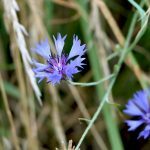
Cornflower, Centaurea cyanus - Fact Sheet and Pictures
The cornflower is an annual plant from the sunflower family. This beautiful plant is under nature protection, so it must not be collected. For a long time, the cornflower was considered an arable weed, and as a result it was gradually displaced from agriculture.
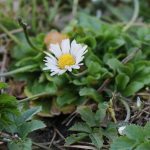
Daisies, Bellis perennis - facts and figures
The daisy is a perennial plant from the sunflower family. The plant comes from the Mediterranean region, so it prefers a sunny location. Daisies are popular wild herbs.

Lady's mantle, Alchemilla xanthochlora - profile and pictures
Lady's mantle is a perennial plant from the rose family. The plant originally comes from Eastern Europe and Asia. Lady's mantle is used to cure women's ailments such as menstrual pain or menopausal symptoms.
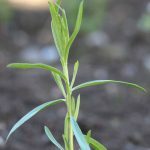
Tarragon, Artemisia dracunculus - Profile and Pictures
Tarragon is a perennial plant from the sunflower family. The plant, which originated in Asia, is now at home in many regions of the world. Tarragon is a popular herb and one of the most important ingredients for making Bearnaise sauce.

Borage, Borago officinalis - Fact Sheet and Pictures
Borage is an annual plant in the predatory leaf family. The plant, which comes from the Mediterranean region, was cultivated in the monastery gardens of Central Europe at the beginning of the Middle Ages. Borage is also known as cucumber herb because it has the taste of fresh cucumber.
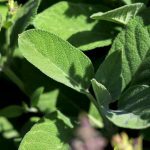
Sage, Salvia officinalis - facts and figures
Sage is a perennial plant in the mint family. The heat-loving plant of Mediterranean origin needs lime-rich, nutrient-poor and dry soils. Sage has been one of the most important medicinal plants since ancient times.

Lavender, Lavandula angustifolia - plants + care instructions
Lavender is a perennial plant in the mint family. The subshrub comes from the Mediterranean area and needs a dry, sunny location. Essential oils extracted from lavender are popular fragrances, which is why the plant is grown extensively in southern France. Many people are enthusiastic about the extremely charming fragrance and the magical purple flowers. It is not difficult to like lavender. Real lavender gives off an aromatic scent and has a typical Mediterranean appearance with upright branches that branch out easily. With good care, many of the flowers can be picked in summer and stored in the linen cupboard to drive away moths.
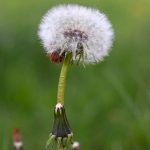
Dandelion, Taraxacum officinale - facts and figures
The dandelion is a perennial plant from the sunflower family and is considered a pointer plant for nitrogen-rich soils. The plant is enjoying increasing popularity in the kitchen. As a medicinal herb, usually in the form of a dandelion tea, it is used for complaints in the digestive tract.
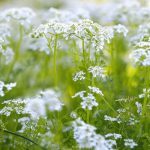
Chervil, Anthriscus cerefolium var. cerefolium - profile and pictures
Chervil is an annual plant and belongs to the sunflower family. Chervil is easily mistaken for parsley because of its leaves. Chervil is very popular in French cuisine and is therefore also known as French parsley.

Marigold, Calandula officinalis - facts and figures
The marigold is an annual plant and belongs to the sunflower family. The plant, which originates from the Mediterranean region, can be found quite often in cottage gardens or in cemeteries, which is why it is nicknamed "flower of the dead". Marigolds are used as a remedy for a wide variety of wounds and complaints.
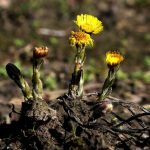
Coltsfoot, Tussilago farfara - profile and pictures
The coltsfoot is a perennial plant from the sunflower family and was named medicinal plant of the year in 1994. It is known to alleviate skin diseases or ailments in the bronchial area. Since the coltsfoot also contains pyrrolizidine alkaloids, which are liver-damaging in large quantities, excessive consumption of the herb is not recommended.
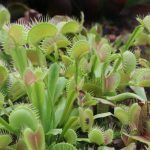
Keeping and caring for the Venus flytrap - how to feed it properly
The Venus flytrap has the botanical name Dionaea muscipula and belongs to the sundew family. The plant is very unusual because it is one of the carnivorous specimens, the carnivores. The Venus flytrap has very specific requirements when it comes to keeping, location conditions and care. These must be strictly adhered to so that it can thrive. The plant is particularly peculiar to the watering units; in addition, it has to be fed when necessary.

Baobab tree as a houseplant - care and pruning properly
The baobab tree is native to Africa. It got its name from German travelers who were fascinated by the imposing plant. The tree is called Adansonia in the technical language of the botanists. It got this name when it was discovered by Michel Adanson in 1749. It is characterized by noticeably thick leaves that look decorative. That is why the baobab tree is often kept as a houseplant. We'll tell you here how best to look after it.

Aloe Vera - keeping the plant, care, watering and repotting
There are around 250 types of aloe vera today. The valuable active ingredients that make them so well known are only contained in one variety, real aloe vera. All species have in common that they are very easy to care for and to keep. The evergreen plants belong to the so-called succulents. Therefore, they are satisfied with little water and poor substrate. Since aloe is not tolerant of frost, it must be moved to winter quarters during the cold season.
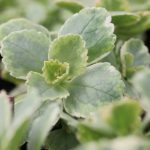
Piss off plant, Plectranthus caninus - care for the anti-cat perennial
Where chemical and acoustic means fail, the piss-off plant (Plectranthus caninus) is a hit. With a concentrated load of essential oils, it forms an invisible barrier for dogs and cats. Trampled beds contaminated with animal droppings are a thing of the past, where Plectranthus caninus thrive. So that the plant with the offensive name can fully develop its power, important criteria must be observed in the cultivation. This green guide explains all the details about caring for the anti-cat perennial.
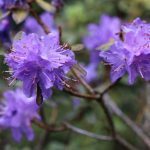
Rhododendron russatum 'Gletschernacht' - profile and care information
The evergreen Rhododendron russatum is at its top form in May when it presents its magnificent, initially blue-violet and after blooming, dark-blue flowers. In combination with the dark green foliage, it attracts everyone's attention. This upright and later compact rhododendron is one of the smaller varieties with heights of up to 110 cm. However, it only reaches its final size after 10-15 years.
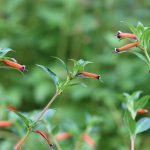
Quiver flowers, Cuphea - wanted poster, care and overwintering
Quiver flowers with their distinctive tubular flowers set surprising accents in the bed, on the balcony and on the windowsill. The Mexican flower beauties give your design plan for indoors and outdoors an exotic flair. With their lush appearance and a never-ending flowering period, Cuphea are much more than a floral vehicle for classic perennials. The following profile summarizes all wonderful attributes. Find out here how to properly care for the pretty cigarette flowers and successfully overwinter them.

Elfenspiegel, Nemesia - Care instructions for the summer flower
The Elfenspiegel enchants in summer with its many, small flowers that are reminiscent of violets. The summer bloomers are available in a wide variety of colors, including multi-colored. From a botanical point of view, the Elfenspiegel forms its own genus (Nemesia), to which around 65 varieties belong. With us, the popular summer bloomer is planted in the garden or cultivated in planters. Nemesia is easy to care for when the right location is found. Unfortunately, the abundant flowering plants are mostly not perennial.

Gold dust plant, Mecardoni 'Gold Dust' - profile and care
Quite inconspicuous at first glance, the gold dust plant Mecardoni 'Gold Dust' unfolds its full splendor throughout the summer until the first frost. Then this grateful bed and balcony flower is, of cushion-like, creeping growth, covered by countless, small, bright yellow flowers. These filigree yellow flowers can be seen from afar and are equally effective in hanging baskets, window boxes or as ground cover. Unfortunately it is not hardy.

Ficus Ginseng as a bonsai - care and cutting
The Ficus Ginseng can be cultivated well as a bonsai because it is relatively easy to care for. Even beginners in this area will be able to cope with the delicate little tree, and the purchase price is manageable. The small bonsai is very decorative and fits both in the living room and in an office. It is important to adhere to certain care steps with regard to the site conditions and the casting units, so that the owner can enjoy the exotic plant for many years.

Congo lizards, Niamniam balsam, Impatiens niamniamensis - care
With its eye-catching and at the same time bizarre flowers, the Congo Lieschen, also known as the parrot's beak flower, sets color accents almost all year round. Due to the lack of winter hardiness, the spring herb plant is cultivated exclusively in tubs or pots and overwintered frost-free. It is evergreen, perennial, well branched and succulent. Nevertheless, it is relatively rare to find it as a houseplant, although it is very easy to care for.

Ice begonias, Begonia semperflorens - care for the summer bloomer
Its flowers are dainty and small, but the ice begonia produces them tirelessly over the all summer in such abundance that the flower is our favorite summer bed dweller heard. They decorate gardens, borders and flower pots from May to autumn. What every hobby gardener particularly likes: The classic is one of the most robust permanent bloomers in our latitudes and requires little maintenance. Unfortunately, ice begonias are not hardy.
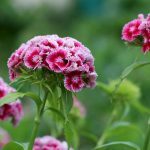
Barnacles, Dianthus barbatus - sowing and care in the garden
For a long time the carnation was considered old-fashioned and was only cultivated in cottage gardens. But now the pretty flower is experiencing a renaissance. Lovers and flower lovers have not only rediscovered them for the garden, they also help to create them the fragrant perennial bloomer also has beautiful flower arrangements in pots on the balcony and the Terrace. Here you can find out everything you should know about sowing, growing and caring for the bearded carnation.
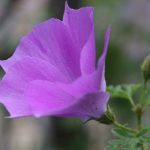
Blue hibiscus, Alyogyne huegelii - planting and care instructions
The blue hibiscus is a fascinating plant that enhances gardens and parks in the summer months with its 10 cm large flowers. Mallow plants are versatile, but this perennially flowering subshrub has a few special requirements when it comes to cultivation. Alyogyne huegelii is a plant that is native to warm areas. The herbaceous plant feels at home in the bucket and can thus be set up in the winter garden and outdoors without any problems.
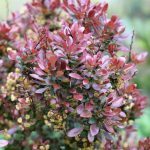
Green hedge barberry, Thunberg barberry, Berberis thunbergii - care
The green hedge barberry is particularly valued by gardeners because of its dense foliage and the height of well over 2 m. The robust plants from Asia transform into an opaque privacy screen within a few years. The shrubs decoratively shield individual areas of the garden from prying eyes. In autumn, the Thunberg barberry shows its best side with its orange to scarlet foliage.

Mountain laurel, bay rose, Kalmia latifolia - is it poisonous? Care information
The mountain laurel is rarely seen in the gardens at home. Kalmia latifolia is also not very common as a container plant. And that despite the fact that it produces beautiful flowers from April to June. The shrub from the heather family is also undemanding to care for. Only the location should be carefully considered. The plant grows slowly and reaches a height of around one meter. Therefore it is also suitable for small ornamental gardens. It is also rarely attacked by pests and luckily diseases occur very rarely. So what's the catch? The mountain laurel is very poisonous. Its poison is deadly to animals and humans. The bay rose does not fit in households with small children or in those with pets or farm animals. For the mindful plant lover, however, it is a real asset.
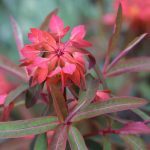
Himalaya Griffiths Spurge 'Fireglow' - Euphorbia griffithii - profile & care
The orange-red flowers of Euphorbia griffithii 'Fireglow' are striking and powerful. The milkweed plant can score with its beauty not only in spring, but also impresses with its beautifully colored leaves in autumn. The perennial shrub is particularly effective in group planting and can be used here in many ways. In terms of care and location, the herbaceous perennial does not make any exotic demands on the passionate hobby gardener.
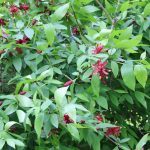
Real spice bush, Calycanthus floridus / fertilis - care from A-Z
The real spice shrub Calycanthus floridus lives up to its name, because especially in the evening hours, flowers, leaves and bark give off different but very pleasant scents. While its wood smells of cloves, the scent of flowers is often perceived as magnolia or strawberry-like. In addition to the intense fragrances, the graceful, rust-brown flowers that stand out Their shape is also reminiscent of magnolias and on the green foliage for unique contrasts care for.

Snowflake flower, Bacopa, Chaenostoma cordatum - everything for care
As a perennial perennial bloomer, the snowflake Chaenostoma cordatum knows how to put itself in the limelight. Be it as a creeping ground cover in the garden or hanging in hanging baskets and window boxes. A multitude of bright white, pink or lilac-colored, snowflake-like flowers push themselves over the green foliage from May to October and make this plant a real eye-catcher. The snowflake flower, also sold under the name Bacopa, is relatively adaptable and easy to care for.

Alpine clematis, Clematis alpina 'Tage Lundell' - profile, varieties & care
The creeping alpine clematis is a majestic beauty with its up to 3 m long tendrils. The nickname "Queen of the climbing plants" is by no means a coincidence. In the flowering period, which extends from April to June, the perennial enchants the silent observer with its bell-shaped flowers, which shine in shades of blue to purple. Clematis alpina, alpine clematis is perennial and easy to cultivate in the garden.
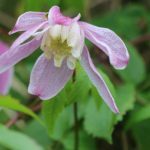
Clematis, wild species, Clematis macropetala - profile and care
The trivial name of Clematis macropetala is: Large-flowered alpine clematis. And this is exactly where the peculiarity of this plant genus lies. The buttercup family are closely related to Clematis alpina, but impress with their 10 cm large, bell-shaped flowers. The perennial planted fences and stone walls with ease. With a length of over 3 m, the shoots are an eye-catcher. Passionate hobby gardeners only have to make little effort to meet the needs of the clematis.
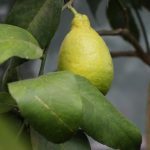
Lemon tree - the basics of caring for the lemon
The lemon tree has been a very popular container plant for several years. The trees that are easy to care for are now available in different varieties. The best known variety is Citrus limon. Other varieties differ from Citrus limon in growth form, some varieties develop fewer thorns, while others develop fruits all year round. They all have one thing in common: their lemons taste delicious.
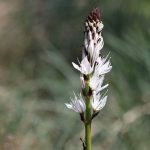
White Affodill, Asphodelus albus - profile and care information
White affodilla is rarely found in gardens as an ornamental plant. The herbaceous plant from the Affodill family is easy to care for. The affodill has recently become famous through the Harry Potter stories. There it is the basic substance of the drink of the living dead. This connection is not a pure invention. It goes back to Greek mythology. In Europe the plant is under nature protection.
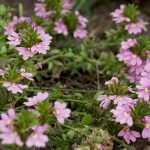
Blue fan flower, Scaevola aemula - varieties, care and propagation
The blue fan flower is one of the permanently blooming plants. From the beginning of May until well into October, the evergreen perennial delights the viewer with its lush, dense blossoms. With their long shoots, the plants bring color to the rock garden. And in hanging baskets they conjure up a picturesque atmosphere on the terrace and balcony. The plants from Australia are easy to care for, but their need for sunlight and water should not be underestimated.
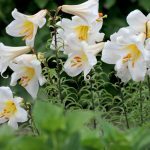
Madonna lily, Lilium candidum - Care and propagation of the white lily
The Madonna Lily (botanical: Lilium candidum) is a plant beauty with impressive Properties that range from the extraordinary size to the pure white flowers to the beguiling Scent rich. In view of the many positive characteristics, it is almost a bit surprising that the eye-catching lily is not one of the very demanding plants - on the contrary, it comes with comparatively little care the end. Find out what it is still essential to observe in order to provide the Madonna Lily with optimal living conditions!
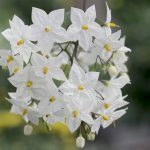
White jasmine, summer jasmine, Solanum laxum / Jasminoides - care
White jasmine is an attractive plant that, with its long shoots, easily climbs garden fences and trellises. With a height of over 3 m, the South American nightshade plant is anything but inconspicuous. The heavy smell of the white flowers attracts many butterflies and bumblebees from March to the end of September. Summer jasmine is not a perennial that can be left to its own devices in summer. For cultivation to be successful, there are some requirements that must be met.

Blue daisy, Brachyscome iberidifolia - care of the permanent flower
Blue daisy is a permanent bloomer, which is very popular on the balcony and in the garden due to its distinctive flowers. The robust daisy has nothing in common with the domestic daisy. Only the shape of the flower is reminiscent of the well-known, white and yellow meadow flowers from our childhood. The cultivation of the beautiful ornamental plants is simple, specialist knowledge or a green thumb is not necessary. Brachyscome iberidifolia forgives many mistakes in care and regenerates quickly due to the strong growth.
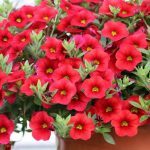
Magic bells, mini petunias, millionbells, calibrachoa - care
Magic bells, mini petunias, millionbells or calibrachoa - it is worth buying the nightshade plant with the many names. With adequate care, the dense, hanging shoots and the associated large flowers make the plant a real eye-catcher. It is considered to be relatively undemanding. Nevertheless, there are some basic requirements to be met - only then can the magic bell live up to its name and develop all of its beauty.

Evergreen pillow snowball, Viburnum davidii - care instructions
The evergreen pillow viburnum or Viburnum davidii originally comes from western China. It is a dwarf shrub, the shoots of which are dense and regularly branched and spread horizontally up to the ground. From May to June you can enjoy the white umbels with a pink tinge and a delicious scent. In addition, the plant forms blue-ripened stone fruits in September, which are nice to look at, but not edible. Comprehensive care instructions for the pillow snowball!
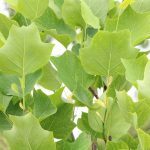
Tulip tree, Liriodendron tulipifera - profile, care and cutting
Its large, cup-shaped flowers have given Liriodendron tulipifera its German name, tulip tree. They make the deciduous tree a jewel in parks and large home gardens. As a relative of the better-known magnolia, like the magnolia, it appreciates a milder climate in order to bloom to its full glory.

Japanese snowball, Viburnum plicatum 'Mariesii' - all varieties and care
Its large, creamy white flowers are its special feature. With its stately size of up to three meters, the Japanese snowball 'Mariesii' attracts the attention of the beholder. Like all snowballs from the genus Viburnum, a Japanese snowball 'Mariesii' is one of the most attractive shrubs in the home garden. Even when it is fading it is wonderfully beautiful. Then the flowers take on a light pink tone and its leaves take on a dark red color.
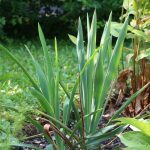
Threaded palm lily, garden yucca, yucca filamentosa - care & cutting
With its upright growth, the dense eyrie and the sword-like leaves, the filamentous palm lily is a striking appearance. Particular attention should be paid to the up to 300 cm high flower stems, at the ends of which are the bell-shaped flowers. The plant is evergreen and brings color to the barren winter landscape. Despite its exotic appearance, the yucca is easy to care for and robust.

Liver balm, Ageratum houstonianum - care from A-Z
The liver balm, botanically Ageratum houstonianum, is a member of the sunflower families. Its home is the tropical areas of Central and South America. Because of the long flowering time from May to the first frost in autumn, the plant is very popular with many hobby gardeners as a border and for pots and tubs. The bushy tubular flowers in blue, pink and white shine from afar and form velvety flower cushions with their very own charm.

Ornamental onion, allium - beautiful varieties, planting and care of the flower leek
The most impressive bulbous plants gather under the name ornamental onion, botanical name Allium. The representatives of this genus are thus directly related to garlic, onion or chives. Each of the more than 800 species worldwide has its own characteristic appearance. The flowers of the easy-care leek plants are a welcome eye-catcher in every garden. This applies to both the fantastic flower balls of the giant leek (Allium giganteum) and the only 20 cm high Berlin wild garlic (Allium paradoxum).
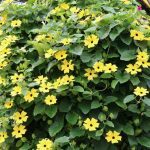
Black-eyed Susanne, Thunbergia alata - cultivation and care
The black-eyed Susan, a climbing plant with decorative small flowers, is becoming increasingly popular in gardens in the local latitudes. Because it cuts a fine figure not only in the garden, but also in the kitchen. The actually annual, non-poisonous plant can be overwintered in the tub and is therefore easy to cultivate for families with small children and pets. It is very decorative in the garden as a summer privacy screen in front of a fence or on the terrace and balcony in a bucket and also hanging in a hanging basket.
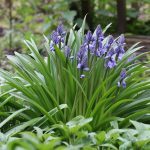
Prairie Lily, Camassia - varieties, care and propagation
Prairie lilies are filigree beauties that adorn the garden with their bright, star-shaped flowers in late spring. Hardly any viewer can escape the sight of these distinctive perennials. The bulbous plants are perennial and little effort is required to cultivate prairie lilies in the ornamental bed or in the tub. Beginners and passionate hobby gardeners alike should enjoy the robust and resilient asparagus plant.
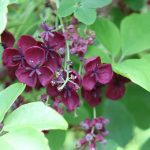
Finger-leaved Akebia, climbing cucumber, Akebia quinata - care instructions
The climbing cucumber is still relatively unknown in our latitudes. This is also known under the name finger-leaved Akebie or chocolate wine. The easy-care climbing plant impresses above all with its filigree leaves, which look like the five fingers of a hand. However, until the Akebia quinata shows its beautiful, purple flowers, the hobby gardener needs a little patience. Even their leaves can beautify house walls, fences or a privacy screen, and due to the easy care they are hardly any work.
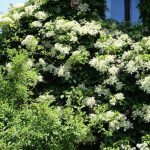
Climbing hydrangea, Hydrangea petiolaris - care and cutting
The climbing hydrangea is, as the name suggests, a climbing plant that anchors itself in trees, on walls or fences with the help of adhesive roots and therefore does not need any climbing aid. The leaves and flowers are large and can beautify any unsightly house wall. If it is not cut back, Hydrangea petiolaris can grow and climb up to 15 meters. But even if it is planted free-standing, it reaches a height of 1.50 meters as a bush and is therefore also suitable for cultivated in a planter on the balcony or terrace.
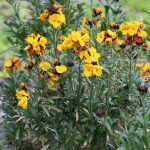
Gold lacquer flower, Erysimum cheiri - Planting & Care Instructions
With its long, partly drooping leaves and bright flower heads, gold lacquer is a striking, beautiful plant. The plant owes its popularity not only to its appearance and the fragrant scent of the lush flowers. The cultivation of the exotic ornamental shrub is easy, mistakes in care are quickly forgiven by the robust plant. Erysimum cheiri is one of the oldest flowering plants in our gardens.

Korean clematis, Clematis koreana - characteristics and care
Like its sisters from the clematis genus, the Korean clematis is a good climber. It does not need a lot of space, neither in the ground nor in a bucket. Because it hardly grows in breadth, but rather aligns its growth upwards. Therefore, Clematis Koreana needs a climbing aid to support it. The Korean clematis also provides sufficient moisture for it to thrive. If the summer is hot and dry, she wants water regularly.
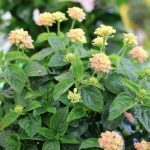
Convertible rose, Lantana camara - care, cutting and propagation
The Lantana camara is a master when it comes to long-lasting blooms, because it blooms from May to October. Its exotic flowers are anything but monotonous, they bloom in a wide variety of colors and change during flowering. With heights of up to 200 cm and in addition to other sun worshipers, it conjures up a Mediterranean flair on terraces and balconies. The only downer is the strong toxicity in all parts of the plant.

Vanilla flower, Heliotropium arborescens, Heliotrope - plants and care
The vanilla flower actually blooms from early summer to late autumn, and this flower is extremely decorative. The flowers can be white, but mostly they are light blue, medium blue or even blue-violet in color. Heliotropium arborescens always has many small flowers that grow umbel-shaped and can be very close together. The plant is still far too little widespread and too unknown when you consider how well it works both visually and olfactorily on the balcony and terrace. In Europe, the vanilla flower can even be kept in the open air as long as it is brought into the house for the winter. The plant takes its name from the beguiling vanilla scent that the flowers give off.
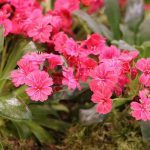
Porcelain florets, bitterwort, Lewisia cotyledon - profile and care
Porcelain florets are undemanding plants that bloom in various shades of color from white to magenta in summer. They are particularly suitable for planting walls and rock gardens, but can also be grown in pots or tubs. Your location should be very sunny. The ornamental plant is hardy, but tolerates congestion or Not winter wet at all.
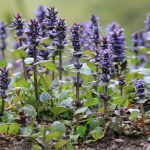
Creeping Günsel, Ajuga reptans - profile and care
With this versatile wild shrub, naturalness finds its way into the home garden. The predominantly blue flowering crawling Günsel is a valuable ground cover that can green large areas in a very short time and form closed carpets of flowers and leaves. During the flowering period from May to June, this perennial evergreen perennial shows its spike-shaped, violet-blue flower candles, which rise above the green or purple-colored leaves, depending on the variety. If necessary, its spread must be limited.
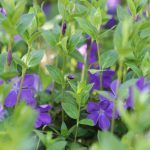
Large leaved periwinkle, Vinca Major - care information
As a compact ground cover, large-leaved evergreen can be used in a variety of ways in the garden. With its strong growth and star-shaped, decorative flowers in blue, white or reddish-purple, Vinca Major is recommended for rock gardens or borders. It is suitable for planting hanging gardens and hill beds and is also attractive in pots. Large evergreen grows into a beautiful subshrub within a short time. It effectively suppresses the weeds at its location.
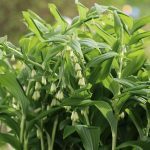
Solomon's seal, Weisswurz, Polygonatum multiflorum - profile and care
The many-flowered Solomon's seal, Latin Polygonatum multiflorum, is also known as the woodwort or Solomon's seal. Due to the similarity of the name, it is often confused with Polygonatum odoratum, the real Solomon's seal. White root is a medicinal plant, but it is also poisonous. The care of the forest Solomon's seal, which inspires with white flower bells, is not time-consuming.
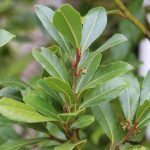
Bay tree, laurel, Laurus nobilis - care and pruning
In the bucket, the laurel tree is a feast for the eyes on the balcony and winter garden. As a spice plant, laurel gives hearty meat dishes and soups a special aroma. How to skilfully care for the Mediterranean Laurus nobilis in the ornamental and herb garden and how to cut it elegantly will no longer remain hidden from you when you read these care instructions. This green guide takes up in detail how you can successfully overwinter the classic, propagate it correctly and repel pests.

Reticulated peony, Paeonia tenuifolia - care instructions
The net leaf peony is a special representative of its kind. It is the only peony with finely divided leaves. Its bright red leaves are a feast for the eyes in the garden between May and June and give it a romantic flair. The narrow-leaved peony is a robust plant that can be left to its own devices in summer. A few special needs have to be met in order to cultivate the rarity from Southeast Europe in our gardens for many years.
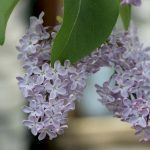
Lilac tree, lilac, syringa - profile, location and flowering time
The common lilac is experiencing a furious renaissance. Garden lovers with a weakness for opulent flowers with a romantic flair have rediscovered the classic. This profile shows you which special attributes a Syringa vulgaris has to offer. Explore all the relevant aspects here in order to properly plant and propagate a lilac tree in the ideal location. Benefit from useful tips for a long flowering period.

Gämswurz, Gemswurz, Doronicum - profile, care and use
Gemswurz, also chamois root, is a popular plant for the perennial garden. About 35 species are native to Europe, Asia and North Africa. The plants reach heights between ten and sixty centimeters. Few types of chamois root reach 90 centimeters. Very rare species grow to a height of 150 centimeters. Doronicum, the botanical name of the perennial, blooms vigorously yellow. The plant belongs to the daisy family and has an excellent reputation as a bee pasture.
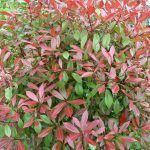
Common medlar Photinia fraseri 'Red Robin' - care as a shrub & standard trunk
Its bright red leaf shoots above the shiny, evergreen foliage set extravagant accents in the spring garden. The red robin Photinia fraseri is one of the most popular ornamental trees in modern garden design. With its white panicles of flowers and red berries, the successful cultivation as a solitary and opaque hedge inspires. Are you interested in the professional care of this outstanding loquat? Then read this green guide, which brings all the important aspects to the point in a practical manner.



